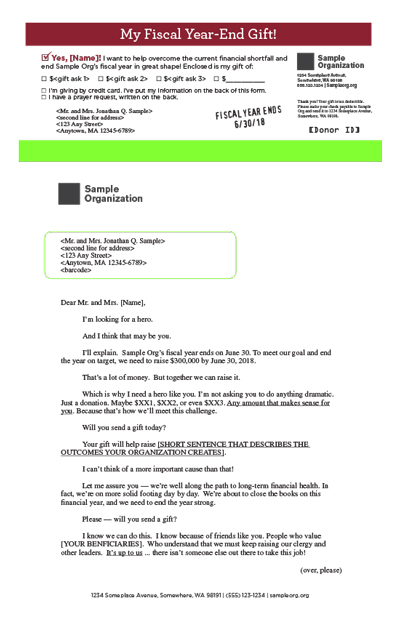I want to talk to you about fundraising for “Fiscal year-end” – why it works and how to do it for your organization.
I’m focusing on this because fundraising for “fiscal year-end” works great. And we want you to raise more money and do more good. If you’re not using this fundraising opportunity, you should be.
It Doesn’t Make Sense…
The first thing to say is that no one believes that fiscal year-end fundraising will work for their organization. No one.
And that’s reasonable! After all, what donor is thinking about when your fiscal year is, and what happens at the end of it?
On the surface, who would think that an appeal about the end of your budgeting cycle would motivate a donor to give? It’s entirely organizational-centric, and apparently not donor-centric at all. But…
…It Just Works
Fundraising for fiscal year-end (FYE) works great for our clients (and lots of other organizations) year after year.
The FYE appeal letter is usually one of the best-performing letters of the year. The emails usually perform second-best behind only the December year-end emails.
I’m telling you this because, if your organization’s fiscal year ends June 30th, you have a great fundraising opportunity that – most likely – you’re not taking full advantage of.
This the proverbial low-hanging fruit for you. And we’re going to show you how to grab it.
Why It Works
If we dig a little deeper, we see why FYE fundraising works so well:
- There’s a simple, powerful problem the donor can help solve. Every one of us has had the problem of being ‘a little short’ at the end of a month. That means your donor understands and can feel the problem on her own. That right there makes her more likely to respond.
- There’s a clear deadline. We know from experience (year-end fundraising, anybody?) that having a clear deadline is magic for motivating donors to take action.
A lot of people will read those two things and think, “Really? That’s it? That’s too simple.”
I know. I think the same thing.
But it works like crazy every year! The power of a deadline and a simple, solvable problem work again and again and again.
We recommend this to every client whose fiscal year ends on June 30th or September 30th.
Our Goal
It’s a simple goal. If your fiscal year ends on June 30th, our goal is for you to fundraise for it and use the tips and tactics we’re sharing. If you follow our time-tested advice, we know you’ll be surprised by how much money you can raise!






